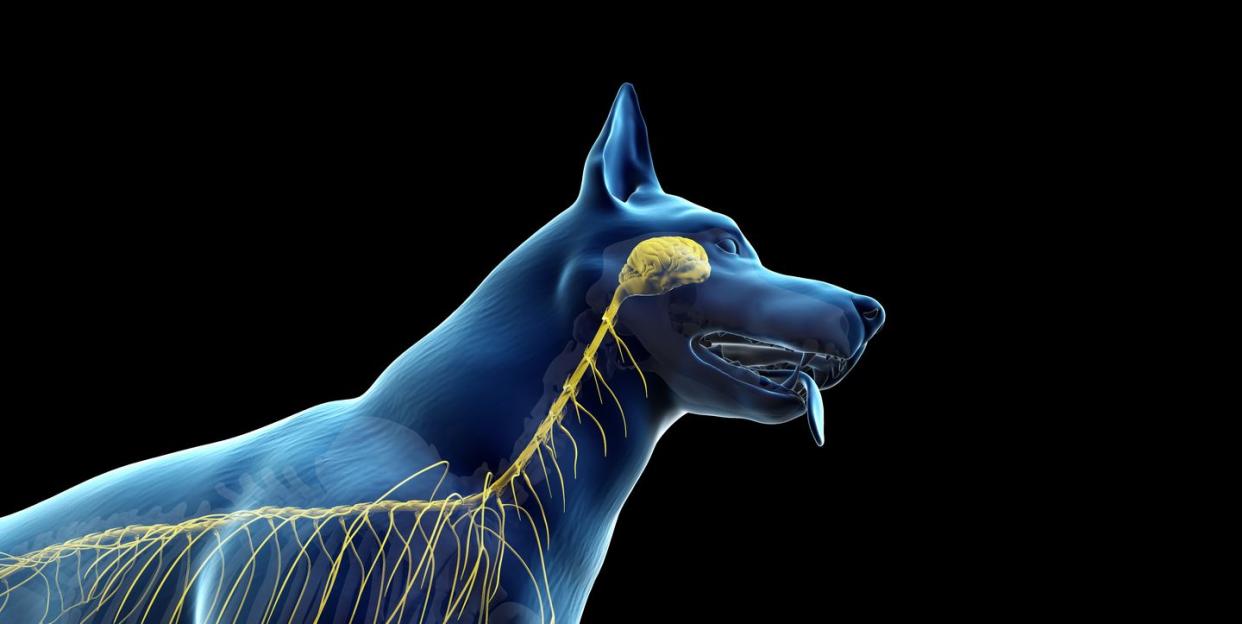The Brains of Dogs Are Getting Bizarrely Bigger, Study Says

A research study in Europe says modern dog breeds have brains larger than those of ancient breeds.
The team credits the evolutionary change to the more complex social environment that modern dogs inhabit.
Typically, domesticated animals have smaller brains than wild counterparts, but modern dogs are closing the gap.
Modern dog breeds haven’t quite caught up to the wolf when it comes to the size of their brains, but that size discrepancy is shrinking. The modern dog’s brain is growing larger, and it could be thanks to their interactions with humans.
A new study, published in the journal Evolution, investigated brain size in both modern and ancient dog breeds. The research team found that dog brains are getting larger the further genetically that they have evolved away from a wolf.
That was a startling finding. “The results show that the breeding of modern dog breeds has been accompanied by an increase in brain size compared to ancient breeds,” Enikó Kubinyi, a senior research fellow at the Department of Ethology at ELTE Institute of Biology, says in a news release. “We couldn’t explain this based on the tasks or life history characteristics of the breeds, so we can only speculate about the reasons.”
In the study, a team from Hungary and Sweden used CT images of over 850 dogs representing 159 breeds to reconstruct different individuals’ brains and determine their brain volume. They compared the findings to 48 wolf specimens.
The data showed that a dog with a similar weight to a wolf had a brain volume about three-quarters the size of the wolf’s. This confirms past research that domestication decreases brain size by about 20 percent, as animals no longer need to hunt or fend for themselves—nor do they face as much peril as they do in the wild.
“There is no need to sustain the energetically costly large brain, and the freed-up energy can be directed toward other purposes, such as producing more offspring,” László Zsolt Garamszegi, an evolutionary biologist at the Ecological Research Centre in Hungary, says in a news release, “which is important for domesticated animals.”
But in a twist of expectations, the further a dog breed was genetically from a wolf, the larger its relative brain size was. And it didn’t matter if the dog had energy-sucking responsibilities, such as herding or guarding.
“Perhaps the more complex social environment, urbanization, and adaptation to more rules and expectations have caused this change,” Kubinyi speculates, “affecting all modern breeds.”
The study says that functional category, skull shape, longevity, and litter size all had no association with relative brain size.
The team believes that the findings are further bolstered by the independence seen in ancient breeds—specifically, their propensity to bark less and react less to human cues than modern breeds.
“Different dog breeds live in varying levels of social complexity and perform complex tasks, which likely require a larger brain capacity,” Niclas Kolm of Stockholm University, says in a news release. “Therefore, we hypothesize that the selective pressures on the brain can vary within the dog species, and we may find differences in brain size among breeds based on the tasks they perform or their genetic distance from wolves.”
You Might Also Like
